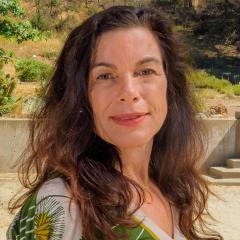Improving the Success of Biodiversity Conservation in the Bay Area
Today is a hot day in the San Francisco Bay Area. It is 100 degrees F in Palo Alto. At the beach it is in the 80s, and about 50 miles inland it’s hitting 110. In San Francisco, it’s 90. If the fog comes in tomorrow the beach temperatures will drop into the 60s, while staying in the 100s inland. Even in one area, the difference in temperature from a southern exposed slope to a northern exposed slope could be 15 degrees or greater.
These stark changes in climate across short distances are part of why the Bay Area is a biodiversity hotspot. The coastal to inland gradient and the complex topography of the mountains create incredible micro-climate differences that produce great variety in ecological communities.
In 2009, a group of scientists and practitioners started meeting to discuss concerns about the impacts of climate change on biodiversity in the San Francisco Bay Area and how management practices needed to adapt. The challenge at the time was that the climate change projections were extremely coarse and did not reflect the complex local geography and micro-climates of the region. Furthermore, the projections did not include variables that drive the response of ecosystems.
This group, now dubbed the Terrestrial Biodiversity Climate Change Collaborative (TBC3), began to work to translate these extremely complex global climate models into projections at local scales and for variables relevant to local land and water management. Six years later, our research group continues its work.
Given some of the uncertainties involved with climate projections, and the novelty of this type of data, TBC3 realized early on that simply making the data available was not going to be enough. We would need to work hard to get it into the hands of managers and work with them to develop methods for using it. In addition, there were many unknown questions that we needed to research. For example, at what spatial scale do we need climate information in order to understand ecosystems’ responses and develop actions in specific places?
In my role as Climate Adaptation Coordinator and Climate Adaptation Scientist for Pepperwood Foundation’s TBC3, supported by the Switzer Foundation Leadership Grant, I have been working with the TBC3 science team to translate complex model results into digestible information relevant to manager needs. I have also been evaluating our outreach work to craft a long-term strategy. One trend that has emerged clearly is all models project increasing warming and drying, even if the Bay Area gets more rainfall. Thus, we need to plan for ecosystems that are increasingly drought stressed as the century goes on.
In our work with managers of open spaces and water resources, we have learned that any technique we can use to reduce uncertainty in future projections is extremely helpful in assisting them to move forward with planning. We have also learned that managers need case studies to illustrate how the incorporation of climate change data is impacting current planning and management. As we proceed with our work, we will document case studies, using them to illustrate how to do adaptation planning in concert with the climate data we are providing online.
San Francisco is a fertile and exciting place to develop adaptation science. Maintaining biodiversity in the midst of rapid economic development and rapid change is a challenge that cities all over the world face. It is the aim of TBC3 to improve the success of biodiversity conservation in the San Francisco Bay Area in this era of rapid change, and that TBC3 will serve as a model for regions all over the world for how to galvanize local climate adaptation action.


